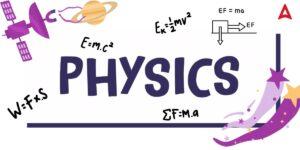Table of Contents
NEET Chemistry Syllabus 2025: The National Testing Agency (NTA) has officially released the NEET Chemistry syllabus for 2025 PDF. The complete NEET UG syllabus for Chemistry includes topics in physical, organic, and inorganic chemistry. Students preparing for the NEET UG 2025 exam must review the updated NEET Chemistry syllabus along with the chapter-wise weightage provided below. Prioritize the important topics from NEET Class 11 and 12 to maximize your score.
NEET Chemistry Syllabus 2025
NEET applicants need to study physical, inorganic and organic chemistry topics equally as the questions are almost same from all three domains of chemistry. Aspirants should follow the NEET 2025 Chemistry Syllabus religiously to achieve the maximum possible mark. The Chemistry NEET Syllabus 2025 includes chapters from both the Class 11 and Class 12 NCERTs. Candidates can make a proper strategy to crack NEET UG 2025 exam with top ranks by following a proper strategy after reviewing the official syllabus.
NEET UG 2025 Chemistry Syllabus
The NEET Chemistry Syllabus 2025 covers topics like Thermodynamics, Equilibrium, Solutions, Coordination compounds, etc. from Class 11 and 12 syllabi that are essential for passing the exam. Chemistry is an important subject for the NEET UG exam because it influences candidates’ overall success. Every student must prepare three main sections: Physical Chemistry, Organic Chemistry, and Inorganic Chemistry from both class 11 and class 12 chemistry text books. Have an overview of the NEET UG Chemistry syllabus 2025 on this page.
Complete NEET Chemistry Syllabus 2025
The NEET Chemistry Syllabus 2025 is separated into three major sections: Physical Chemistry, Organic Chemistry, and Inorganic Chemistry. Understanding the importance and focus of each section aids in efficiently arranging study time and providing a balanced preparation. Let’s have a look at the three sections to grasp the issues addressed and their significance.
NEET Physical Chemistry Syllabus
The detailed chapter-wise topic distribution of the NEET Physical Chemistry Syllabus is discussed below –
- Atomic structure, Elements, and Classification of Elements
- Kinetic theory, Real gases, Liquid State
- Thermodynamic system, Work, Heat, First Law of Thermodynamics, Enthalpy, Second Law of Thermodynamics, Gibbs Energy, Entropy, Gibbs-Helmholtz equation, Spontaneity and Equilibrium, Clausius inequality, Thermochemistry
- Law of mass action, Le Chatelier’s principle, Ionization of acids and bases, Buffer solutions, Solubility product, Common ion effect, pH scale, Hydrolysis of salts
- Balancing of redox reactions, Electrochemical series, Nernst equation, EMF of a cell, Fuel cells, Corrosion, Electrolysis
- Rate of reaction, Factors influencing the rate of a reaction, Arrhenius equation, Collision theory, Catalysis
- Adsorption, Colloids, Emulsions, Micelles
- Periodic table, Trends in properties of elements, Electronic configuration, Ionization energy, Electronegativity
- Position in periodic table, Isotopes, Preparation, Properties, Uses, Hydrides
- Alkali metals, Alkaline earth metals
- Boron family, Carbon family, Nitrogen family, Oxygen family, Halogens, Noble gases
- Transition metals, Inner transition metals
- Nomenclature, Isomerism, Bonding in coordination compounds, Werner’s theory, Valence bond theory, Crystal field theory
- Purification methods, Qualitative analysis, Quantitative analysis, Determination of molecular formula, NMR, Mass spectrometry, Chromatography
- Electronic displacements in a covalent bond, Types of organic reactions, Inductive effect, Resonance, Hyperconjugation, Tautomerism, Stereochemistry
Hydrocarbons
- Alkanes, Alkenes, Alkynes, Aromatic hydrocarbons
- Environmental pollutants, Green chemistry
NEET Organic Chemistry Syllabus
The detailed chapter-wise topic distribution of the NEET Organic Chemistry Syllabus is discussed below –
- Tetravalency of Carbon, Shapes of Organic Molecules, Hybridization, Isomerism, Resonance, Hyperconjugation, Inductive and Electromeric Effects, Acid-Base Concepts in Organic Chemistry
- Alkanes, Alkenes, Alkynes, Aromatic Hydrocarbons, Mechanism of Electrophilic Substitution, Methods of Preparation and Properties
- Detection of Elements (N, S, Halogens), Detection of Functional Groups (Nitro, Cyanide, Carbonyl, Aromaticity), Detection of Carbohydrates and Fats in Food
- Alcohols, Phenols, Ethers, Aldehydes, Ketones, Carboxylic Acids, Acid Derivatives, Esterification, Oxidation-Reduction, Williamson Synthesis, Reimer-Tiemann Reaction, Clemmensen Reduction
- Carbohydrates, Proteins, Vitamins, Nucleic Acids, Hormones, Enzymes
- Amines, Classification, Nomenclature, Structure, Basicity of Amines, Preparation, Physical and Chemical Properties, Diazonium Salts and their Chemical Reactions, Hofmann’s Bromamide Reaction
- Classification, Types, General Methods of Polymerization, Copolymerization, Some Important Polymers and their Monomers, Biodegradable Polymers, Conducting Polymers
- Haloalkanes and Haloarenes, Nomenclature, Nature of C-X bond, Methods of Preparation, Physical and Chemical Properties, Uses
- Drugs and their Classification, Therapeutic Action of Different Classes of Drugs, Chemicals in Food, Cleansing Agents
NEET Inorganic Chemistry Syllabus
The detailed chapter-wise topic distribution of the NEET Inorganic Chemistry Syllabus is discussed below –
Classification of Elements and Periodicity
- Modern periodic table, Electronic configuration, Trends in properties, Periodic trends in physical and chemical properties
p-Block Elements
- Boron family, Carbon family, Nitrogen family, Oxygen family, Halogens, Noble gases
Hydrogen
- Position in the periodic table, Isotopes, Preparation, Properties, Uses, Hydrides
Coordination Compounds
- Nomenclature, Isomerism, Bonding in coordination compounds, Werner’s theory, Valence bond theory, Crystal field theory
s-Block Elements
- Alkali metals, Alkaline earth metals
Environmental Chemistry
- Environmental pollutants, Green chemistry
d- and f-Block Elements
- Transition metals, Inner transition metals
General Principles and Processes of Isolation of Metals
- Principles of metallurgy, Occurrence of metals, Extraction of metals, Enrichment of ores, Extractive metallurgy of common metals.
NTA NEET 2025 Chemistry Syllabus PDF Download
NTA NEET 2025 Chemistry Syllabus PDF is an excellent resource for students because it provides a clear-cut, planned syllabus for their preparation. Download the NEET 2025 Chemistry Syllabus to ensure that you don’t miss any vital chapter or concept. The NTA’s NEET Chemistry Syllabus 2025 PDF is an official document outlining all of the topics and subtopics that will be covered in the NEET UG 2025 exam.
Check latest syllabus of other subjects of NEET UG exam 2025 below:
| Domain | Syllabus | Previous Year Question |
| Biology | NEET Biology syllabus | NEET Biology Previous Year Question Paper |
| Physics | NEET Physics Syllabus | NEET Physics Previous Year Question Paper |
NEET UG 2025 Chemistry Chapter-wise Weightage
Grasping the NEET Chemistry Chapter-wise weightage for 2025 of every topic aids in organizing your study strategy. Subjects such as Organic Chemistry, Chemical Kinetics, and Coordination Compounds frequently hold greater significance. Identifying the most significant topics enables you to concentrate your efforts where they will yield the greatest impact. Distributing study time based on importance guarantees that you thoroughly address all key areas and are adequately prepared for the exam.
|
NEET Chemistry Syllabus 2025 Weightage
|
|||
|
Class Name
|
Chapter Name
|
Average No. of Questions
|
Weightage
|
|
NEET Physical Chemistry Chapter-wise Weightage
|
|||
|
Class XI
|
Mole Concept
|
2
|
5%
|
|
Class XI
|
Atomic Structure & Nuclear Chemistry
|
1
|
3%
|
|
Class XI
|
Gaseous State
|
1
|
3%
|
|
Class XI
|
Thermodynamics & Thermochemistry
|
1
|
3%
|
|
Class XI
|
Chemical Equilibrium
|
1
|
3%
|
|
Class XI
|
Ionic Equilibrium
|
2
|
4%
|
|
Class XI
|
Redox Reactions
|
1
|
2%
|
|
Class XII
|
Solid State
|
1
|
3%
|
|
Class XII
|
Solutions & Colligative Properties
|
2
|
4%
|
|
Class XII
|
Electrochemistry
|
1
|
3%
|
|
Class XII
|
Chemical Kinetics
|
2
|
4%
|
|
Class XII
|
Surface Chemistry
|
1
|
2%
|
|
NEET Organic Chemistry Chapter-wise Weightage
|
|||
|
Class XI
|
Hydrocarbons
|
2
|
4%
|
|
Class XI
|
General Organic Chemistry
|
2
|
5%
|
|
Class XII
|
Haloalkane
|
1
|
2%
|
|
Class XII
|
Aldehydes, Ketones, and Carboxylic Acids
|
2
|
3%
|
|
Class XII
|
Polymer
|
1
|
2%
|
|
Class XII
|
Alcohol, Phenol, Alkyl Halide
|
2
|
4%
|
|
Class XII
|
Aromatic Compounds
|
3
|
6%
|
|
Class XII
|
Biomolecules
|
2
|
4%
|
|
Class XII
|
Carbonyl Compounds
|
2
|
4%
|
|
Class XII
|
Organic Compounds comprising Nitrogen
|
2
|
3%
|
|
Class XII
|
Chemistry in Everyday Life
|
2
|
3%
|
|
Class XII
|
Environmental Chemistry
|
1
|
2%
|
|
Class XII
|
IUPAC & Isomerism
|
2
|
4%
|
|
Class XII
|
Practical Organic Chemistry
|
1
|
2%
|
|
NEET In-Organic Chemistry Chapter-wise Weightage
|
|||
|
Class XI
|
Chemical Bonding
|
4
|
9%
|
|
Class XI
|
P-Block Elements
|
3
|
7%
|
|
Class XI
|
Periodic Table & Periodicity in Properties
|
2
|
4%
|
|
Class XI
|
Hydrogen
|
1
|
2%
|
|
Class XI
|
S-Block Elements
|
1
|
3%
|
|
Class XII
|
Coordination Compounds
|
3
|
6%
|
|
Class XII
|
D and F-Block Elements
|
2
|
4%
|
|
Class XII
|
Metallurgy
|
1
|
2%
|
|
Class XII
|
Qualitative Analysis
|
1
|
2%
|
Topics Deleted from NEET Chemistry Syllabus 2025
The following topics are not included in the NEET UG 2025 Chemistry syllabus.
- Atomic Structure
- Chemical Bonding and Molecular Structure
- Chemical Thermodynamics
Detailed derivation of Gibbs free energy and its application in various processes
- Solutions
- Redox Reactions and Electrochemistry
- Chemical Kinetics
- P-Block Elements
- D- and F- Block Elements
- Coordination Compounds
- Organic Chemistry
- Principles Related to Practical Chemistry
NEET Chemistry Syllabus 2025 Important Topics
The main subjects in the NEET Chemistry Syllabus 2025 feature Aldehydes, Ketones and Carboxylic Acids, the d and f-Block Elements, Chemical Kinetics, and Equilibrium. These subjects are often evaluated and are crucial for achieving a high score on the test. Concentrating on these crucial subjects guarantees that you address the high-yield topics that are expected to be on the test. Careful study of these subjects can greatly enhance your total score.
| Chapter Name | Important Topics |
| Some Basic Concepts of Chemistry |
|
| Redox Reactions |
|
| Structure of Atom |
|
| Thermodynamics |
|
| Equilibrium |
|
| Organic Chemistry – Some Basic Principles and Techniques |
|
| Hydrocarbons |
|
| Classification of Elements and Periodicity in Properties |
|
| Chemical Bonding and Molecular Structure |
|
| Principles Related To Practical Organic Chemistry |
|
| The p-Block Elements Part 1 |
|
| Solutions |
|
| Electrochemistry |
|
| Haloalkanes and Haloarenes |
|
| Alcohols, Phenols and Ethers |
|
| Aldehydes, Ketones and Carboxylic Acids |
|
| Amines |
|
| Biomolecules |
|
| Coordination Compounds |
|
| The d- and f- Block Elements |
|
| The p-Block Elements Part 2 |
|
Here we have provided all the best NEET Chemistry study materials here –
| Important NEET Chemistry Study Materials | |
| NEET Course 2025 | NEET Books |
| NEET Online Coaching 2025 | NEET eBooks |
| NEET Mock Test 2025 | |
Best Books to Prepare for NEET Chemistry Syllabus 2025
Students on their preparation path for NEET frequently questions, “Which books are most effective for NEET Chemistry 2025 preparation?” The top books are NCERT Textbooks and reference materials that address chemistry subjects for classes 11 and 12. Here are additional insights on the top books you can utilize for your NEET UG Chemistry preparation to achieve excellent results.
|
Books Name
|
Details
|
|
Modern ABC of Chemistry for Class 11th & 12th
|
Volume 1 and 2
|
|
Physical Chemistry
|
By O.P. Tandon
|
|
Organic Chemistry
|
By Arihant
|
|
Inorganic Chemistry
|
By J. D. Lee
|
NEET Chemistry Syllabus Preparation Tips
Candidates need to devise an effective strategy to finish the Chemistry Class 11 and 12 chapters for the NEET syllabus. Candidates should adhere to the tips provided below to study Chemistry for the NEET 2025 examination.
- Candidates should consult Chemistry textbooks to get ready for NEET 2025.
- Candidates need to focus on one coaching material and steer clear of various sources that could lead to confusion.
- Reviewing is essential for achievement; candidates should study the NEET syllabus for Chemistry as thoroughly as they can.
- Candidates must be aware of the NEET 2025 syllabus along with its weightage and study accordingly to excel in the exam.
- Taking part in practice tests will assist candidates in assessing and reviewing their performance level.
- The significant subjects noted earlier need to be addressed comprehensively with greater focus.
- Practice extensively with NEET past years’ question papers to understand the exam pattern, marking scheme, and more.




 NEET Botany Syllabus 2025 Out, Check Cha...
NEET Botany Syllabus 2025 Out, Check Cha...
 CUET Science Syllabus 2025 Out, Download...
CUET Science Syllabus 2025 Out, Download...
 CUET Physics Syllabus 2025 PDF Download ...
CUET Physics Syllabus 2025 PDF Download ...


